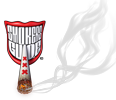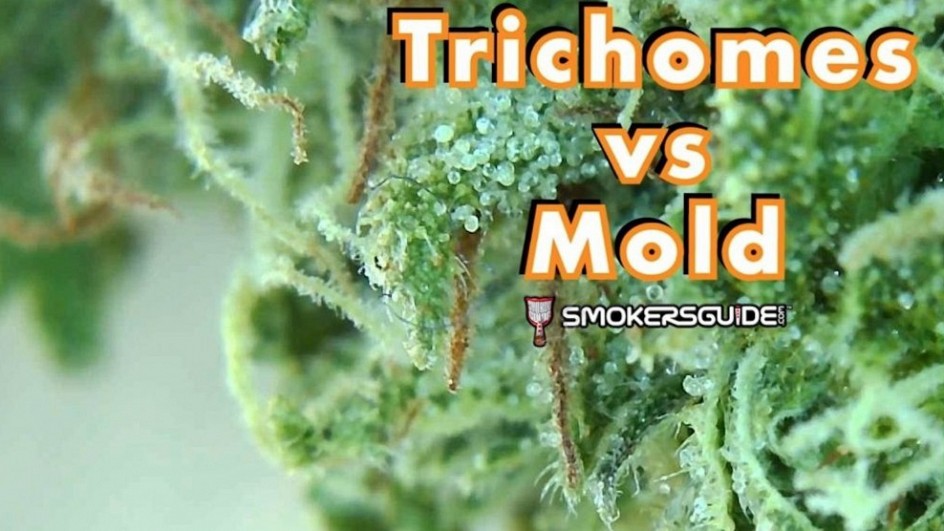As such, it's perfectly natural that many individuals who have never before consumed the drug might be now curious to try it out.
However, this influx of new users has created a new problem - newcomers to marijuana have virtually no idea how to tell different types of cannabis products from one another. This can lead to some very unpleasant experiences, especially where moldy marijuana is concerned.
With every year that passes, weed legalization campaigns gain a few more victories, resulting in a continued normalization of cannabis culture and consumption. To help raise awareness about the safe and responsible use of marijuana, this article will explain the difference between mold and trichomes, as well as how to tell them apart.
Read on and learn all there is to avoiding weed with mold!
What Are Trichomes?
In its simplest form, a trichome is just a small outgrowth from the surface of a plant. Many plants have trichomes, but marijuana plants are particularly known for their abundance of these tiny hair-like growths.
Trichomes serve several important functions for marijuana plants. First of all, they are responsible for creating the terpenes and flavonoids naturally found in cannabis. These outgrowths also store various intoxicating compounds, including the famous THC.
However, the presence of trichomes leads to a significant issue, as premium-quality marijuana is hard to distinguish from moldy weed without looking closely. The consequences of such a mistake can be significant.
Why Should You Never Consume Moldy Cannabis?
Unlike your typical premium-grade CBD offer or other high-quality processed hemp goods, smokeable weed shouldn't be consumed without a thorough inspection first. The reason for that is simple - many strains of cannabis are particularly susceptible to mold due to their dense structure. If you identify mold on your marijuana, you need to toss it out immediately.
There are dozens of different fungi species that can form on cannabis. Some of them can cause serious medical complications, especially in people with weakened immune systems. To illustrate the point, inhaling weed with mold may end up with you consuming mycotoxins. These substances can lead to nausea, vomiting, respiratory infections, and even instances of asthma.
How To Tell the Difference Between Mold and Trichomes?
Fortunately, telling the difference between a high-quality strain full of trichomes and weed with mold is doable and can be learned quite quickly. You just have to rely on your senses.
1. Use Magnifying Glass
The naked eye is not the best tool to distinguish mold and trichomes, so make sure to find a good magnifying glass. Using one should allow you to see trichomes as tiny white mushroom heads that resemble crystals.
On the other hand, mold often has a fuzzy or hairy appearance that isn't uniformly colored. The mold should be somewhat similar to what you could find on an old vegetable or a fruit -a lot of spider webs and groupings of small white balls.
2. Smell Your Weed
Another way to tell a moldy weed from premium-quality cannabis is by smelling it. Weed with mold often has a distinct, damp smell that is similar to rotting wood. This can quickly become a nauseating experience, especially if you have a sensitive nose.
When you have a strain worth consuming, the smell will be quite different. Good marijuana should have a pungent, dank aroma that is often compared to the smell of spices or fruits.
3. Rely on Your Ears
If you are not sure what to look for, you can always crush your weed and listen closely. Moldy weed shouldn't make all that much noise when being pulled apart - after all, it is full of moisture. On the other hand, premium-quality weed should make a crisp sound that is similar to breaking twigs.
4. Ask More Experienced People
If you are still having trouble distinguishing between weed with mold and premium-quality cannabis or simply don't trust your senses, you can always ask for help from more experienced people.
The Internet is full of different forums and communities for both recreational and medicinal cannabis users, so finding someone who is willing to help should not be too difficult. Just make sure to post high-quality photos of your weed that show all the possible nuances. After all, you don't want to accidentally throw away top-notch weed.
Conclusion
While marijuana can provide an enjoyable experience for both recreational and medicinal users, it is not without its risks.
One of the most significant dangers associated with cannabis consumption is inhaling weed with mold. As such, it is essential that all marijuana users learn how to distinguish weed that has gone bad from premium-quality strains. However, with the tips above, you should be able to tell these two apart in no time. Hopefully, you found this article informative, and it will help you make better-informed choices when consuming cannabis.
SmokersGuide.com disclaimer:
SmokersGuide.com takes pride in featuring high quality articles to its readers, however does not assume liability for the claims and medical facts presented by the author. Please check with your doctor or medical practitioner, before consuming any products containing CBD, THC, herbs and Smart Products, or any other products recommended here. Make sure to always check for advised dosages, and please keep all THC and CBD products (including vapes, flowers, oils, concentrates or edibles) away from children, animals and any persons who may not desire to consume them. Make sure to clearly mark all products with warnings about the contents, and store all products in locked, child-proof containers, to avoid accidental ingestion. Please check your own country's laws regarding CBD and THC, and make sure shipping is allowed. SmokersGuide.com content is always created in countries where cannabis products are legal, for medicinal and/or for recreational uses. Smokers Guide does not encourage the use of cannabis in countries where its consumption is illegal.




 Essential Things To Consider Before Buying Cannabis
Essential Things To Consider Before Buying Cannabis  CBD Vs. THC: How To Incorporate Them Safely Into Your...
CBD Vs. THC: How To Incorporate Them Safely Into Your...  Marijuana 101: How to Tell the Difference Between Mold and...
Marijuana 101: How to Tell the Difference Between Mold and...  The best spots in Tanzania that you need to visit
The best spots in Tanzania that you need to visit  CBD vs THC: which one is right for you?
CBD vs THC: which one is right for you?  Dolato Strain Review
Dolato Strain Review  Your complete guide to indicas
Your complete guide to indicas  Top Ways to Consume Cannabis Products
Top Ways to Consume Cannabis Products 

